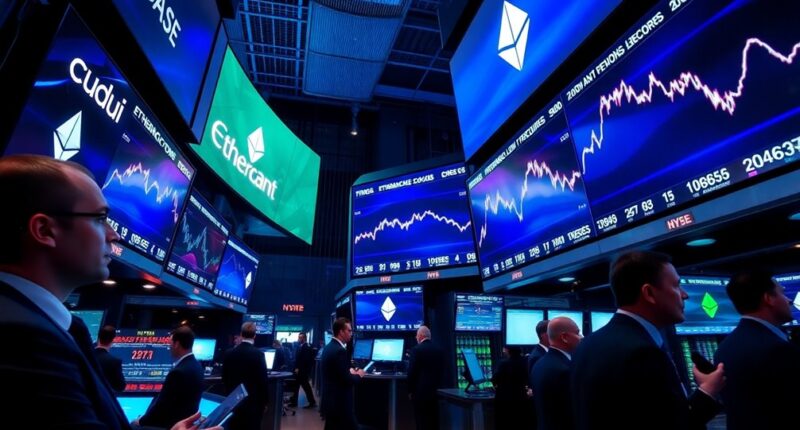As someone interested in blockchain technology, you might find it surprising that Ethereum recently set new transaction records despite ongoing regulatory uncertainties and the SEC’s cautious stance. With over 46 million transactions in July alone, the network’s activity remains strong, driven by infrastructure improvements and growing participation. But how has Ethereum maintained its resilience amid such a challenging landscape? The answer reveals insights into the future of decentralized finance and regulation.

Amid ongoing regulatory uncertainties, Ethereum has shattered its transaction records, highlighting a surge in network activity and adoption. As you observe the ecosystem, you’ll notice that daily transaction volumes have soared beyond 1.6 million, reaching levels not seen since 2021. In July 2025 alone, on-chain transaction volume hit approximately $238 billion, a remarkable 70% increase from June, setting a new monthly record. This surge reflects increasing institutional interest and broader mainstream acceptance. This growth isn’t just a blip; it’s part of a sustained trend, with July’s total transactions climbing to 46.67 million—its highest in nearly four years. The 7-day moving average of daily transactions hovered around 1.64 million during this period, close to the all-time peak of 1.66 million from May 2021, signaling that network activity is approaching historic highs once again. This activity surge underscores how more users and applications are actively engaging with the platform, despite ongoing regulatory challenges. You’ll also see that the number of active Ethereum wallets has reached an all-time high of 127 million, a 22% year-over-year increase as of the first quarter of 2025. In July, active addresses hit 17.55 million, the highest since May 2021, reflecting a broader ecosystem expansion. This growth is driven not only by retail users exploring DeFi and NFTs but also by institutional participants and long-term holders increasing their network engagement. The rising activity across wallets and addresses directly correlates with expanding adoption, making Ethereum the go-to platform for decentralized finance and non-fungible tokens. Market sentiment remains strong, with Ethereum’s market cap surpassing $400 billion in early 2025, reaffirming its position among Layer 1 blockchains. The ETH price rallied over 80% from late June to August, trading comfortably between $3,600 and $3,850. By the end of July, ETH reached multi-year highs near $3,700, driven by network activity and bullish momentum. Traders keep a close eye on technical levels, watching resistance at around $3,742 and support near $2,850, as these levels help gauge future market directions. Much of this optimism is fueled by improving regulatory clarity and a more supportive macroeconomic environment in the U.S., which reassures investors and traders alike. On the infrastructure front, transaction costs have significantly decreased, with average gas fees dropping to around $3.78 in early 2025 from over $18 in 2022. This reduction, thanks to Layer 2 scaling solutions, makes the network more accessible and encourages higher throughput without congesting the system. These improvements give Ethereum a competitive edge over other smart contract platforms by enabling seamless DeFi and NFT activity. As you watch the ecosystem grow, you’ll see over $45 billion locked in DeFi protocols and more than $5.8 billion in NFT trading volume during Q1 2025. This evolution in Ethereum’s ecosystem illustrates the growing complexities of fan culture in digital spaces. All these factors combined—record transaction volumes, expanding user base, lower fees, and scaling advancements—highlight Ethereum’s resilience and evolving dominance amid regulatory headwinds.









